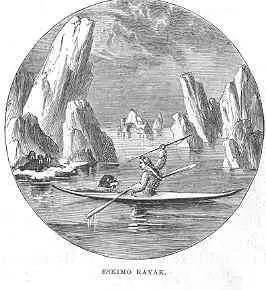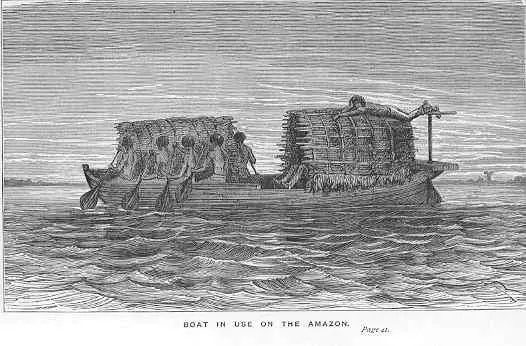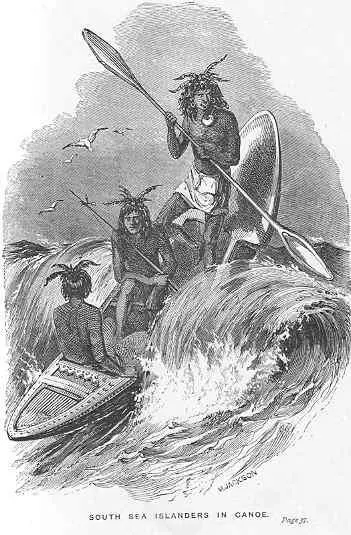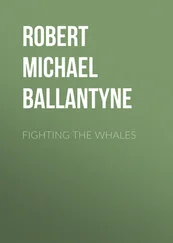Robert Michael Ballantyne - Man on the Ocean - A Book about Boats and Ships
Здесь есть возможность читать онлайн «Robert Michael Ballantyne - Man on the Ocean - A Book about Boats and Ships» — ознакомительный отрывок электронной книги совершенно бесплатно, а после прочтения отрывка купить полную версию. В некоторых случаях можно слушать аудио, скачать через торрент в формате fb2 и присутствует краткое содержание. Жанр: foreign_desc, Технические науки, на английском языке. Описание произведения, (предисловие) а так же отзывы посетителей доступны на портале библиотеки ЛибКат.
- Название:Man on the Ocean: A Book about Boats and Ships
- Автор:
- Жанр:
- Год:неизвестен
- ISBN:нет данных
- Рейтинг книги:5 / 5. Голосов: 1
-
Избранное:Добавить в избранное
- Отзывы:
-
Ваша оценка:
- 100
- 1
- 2
- 3
- 4
- 5
Man on the Ocean: A Book about Boats and Ships: краткое содержание, описание и аннотация
Предлагаем к чтению аннотацию, описание, краткое содержание или предисловие (зависит от того, что написал сам автор книги «Man on the Ocean: A Book about Boats and Ships»). Если вы не нашли необходимую информацию о книге — напишите в комментариях, мы постараемся отыскать её.
Man on the Ocean: A Book about Boats and Ships — читать онлайн ознакомительный отрывок
Ниже представлен текст книги, разбитый по страницам. Система сохранения места последней прочитанной страницы, позволяет с удобством читать онлайн бесплатно книгу «Man on the Ocean: A Book about Boats and Ships», без необходимости каждый раз заново искать на чём Вы остановились. Поставьте закладку, и сможете в любой момент перейти на страницу, на которой закончили чтение.
Интервал:
Закладка:

The famous “Rob Roy” canoe, which is now so much in vogue among boys and young men of aquatic tendency, is constructed and managed on precisely the same principles with the Eskimo kayak; the only difference between the two being that the “Rob Roy” canoe is made of thin wood instead of skin, and is altogether a more elegant vessel. An account of it will be found in our chapter on “Boats.” The South Sea islanders also use a canoe which they propel with a double-bladed paddle similar to that of the Eskimos. They are wonderfully expert and fearless in the management of this canoe, as may be seen from the annexed woodcut.

In order to show that the paddle of the canoe is more natural to man than the oar, we present a picture of the canoe used by the Indians of the Amazon in South America. Here we see thar the savages of the south, like their brethren of the north, sit with their faces to the bow and urge their bark forward by neans of short paddles, without using the gunwale as a fulcrum. The oar is decidedly a more modern and a more scientific instrument than the paddle, but the latter is better suited to some kinds of navigation than the former.

Very different indeed from the light canoes just described are the canoes of the South Sea islanders. Some are large, and some are small; some long, some short; a few elegant, a few clumsy; and one or two peculiarly remarkable. Most of them are narrow, and liable to upset; in order to prevent which catastrophe the natives have ingeniously, though clumsily, contrived a sort of “ outrigger ,” or plank, which they attach to the side of the canoe to keep it upright. They also fasten two canoes together to steady them.
One of these double canoes is thus described by Cheever in his “Island World of the Pacific:”—“A double canoe is composed of two single ones of the same size placed parallel to each other, three or four feet apart, and secured in their places by four or five pieces of wood, curved just in the shape of a bit-stock. These are lashed to both canoes with the strongest cinet, made of cocoa-nut fibre, so as to make the two almost as much one as same of the double ferry-boats that ply between Brooklyn and New York. A flattened arch is thus made by the bow-like cross-pieces over the space between the canoes, upon which a board or a couple of stout poles laid lengthwise constitute an elevated platform for passengers and freight, while those who paddle and steer sit in the bodies of the canoes at the sides. A slender mast, which may be unstepped in a minute, rises from about the centre of this platform, to give support to a very simple sail, now universally made of white cotton cloth, but formerly of mats.”

The double canoes belonging to the chiefs of the South Sea islanders are the largest,—some of them being nearly seventy feet long, yet they are each only about two feet wide and three or four feet deep. The sterns are remarkably high—fifteen or eighteen feet above the water.
The war canoes are also large and compactly built; the stern being low and covered, so as to afford shelter from stones and darts. A rude imitation of a head or some grotesque figure is usually carved on the stern; while the stem is elevated, curved like the neck of a swan, and terminates frequently in the carved figure of a bird’s head. These canoes are capable of holding fifty warriors. Captain Cook describes some as being one hundred and eight feet long. All of them, whether single or double, mercantile or war canoes, are propelled by paddles, the men sitting with their faces in the direction in which they are going.
As may be supposed, these canoes are often upset in rough weather; but as the South Sea islanders are expert swimmers, they generally manage to right their canoes and scramble into them again. Their only fear on such occasions is being attacked by sharks. Ellis, in his interesting book, “Polynesian Researches,” relates an instance of this kind of attack which was made upon a number of chiefs and people—about thirty-two—who were passing from one island to another in a large double canoe:– “They were overtaken by a tempest, the violence of which tore their canoes from the horizontal spars by which they were united. It was in vain for them to endeavour to place them upright again, or to empty out the water, for they could not prevent their incessant overturning. As their only resource, they collected the scattered spars and boards, and constructed a raft, on which they hoped they might drift to land. The weight of the whole number who were collected on the raft was so great as to sink it so far below the surface that they stood above their knees in water. They made very little progress, and soon became exhausted by fatigue and hunger. In this condition they were attacked by a number of sharks. Destitute of a knife or any other weapon of defence, they fell an easy prey to these rapacious monsters. One after another was seized and devoured, or carried away by them, and the survivors, who with dreadful anguish beheld their companions thus destroyed, saw the number of their assailants apparently increasing, as each body was carried off until only two or three remained.
“The raft, thus lightened of its load, rose to the surface of the water, and placed them beyond the reach of the voracious jaws of their relentless destroyers. The tide and current soon carried them to the shore, where they landed to tell the melancholy fate of their fellow-voyagers.”
Captain Cook refers to the canoes of New Zealand thus:—
“The ingenuity of these people appears in nothing more than in their canoes. They are long and narrow, and in shape very much resemble a New England whale-boat. The larger sort seem to be built chiefly for war, and will carry from forty to eighty or a hundred armed men. We measured one which lay ashore at Tolaga; she was sixty-eight and a half feet long, five feet broad, and three and a half feet deep. The bottom was sharp, with straight sides like a wedge, and consisted of three lengths, hollowed out to about two inches, or one inch and a half thick, and well fastened together with strong plaiting. Each side consisted of one entire plank, sixty-three feet long, ten or twelve inches broad, and about one inch and a quarter thick; and these were fitted and lashed to the bottom part with great dexterity and strength.
“A considerable number of thwarts were laid from gunwale to gunwale, to which they were securely lashed on each side, as a strengthening to the boat. The ornament at the head projected five or six feet beyond the body, and was about four and a half feet high. The ornament at the stern was fixed upon that end as the stern-post of a ship is upon her keel, and was about fourteen feet high, two broad, and one inch and a half thick. They both consisted of boards of carved work, of which the design was much better than the execution. All their canoes, except a few at Opoorage or Mercury Bay, which were of one piece, and hollowed by fire, are built after this plan, and few are less than twenty feet long. Some of the smaller sort have outriggers; and sometimes two are joined together, but this is not common.
“The carving upon the stern and head ornaments of the inferior boats, which seemed to be intended wholly for fishing, consists of the figure of a man, with the face as ugly as can be conceived, and a monstrous tongue thrust out of the mouth, with the white shells of sea-ears stuck in for eyes. But the canoes of the superior kind, which seem to be their men-of-war, are magnificently adorned with openwork, and covered with loose fringes of black feathers, which had a most elegant appearance. The gunwale boards were also frequently carved in a grotesque taste, and adorned with tufts of white feathers placed upon black ground. The paddles are small and neatly made. The blade is of an oval shape, or rather of a shape resembling a large leaf, pointed at the bottom, broadest in the middle, and gradually losing itself in the shaft, the whole length being about six feet. By the help of these oars they push on their boats with amazing velocity.”
Читать дальшеИнтервал:
Закладка:
Похожие книги на «Man on the Ocean: A Book about Boats and Ships»
Представляем Вашему вниманию похожие книги на «Man on the Ocean: A Book about Boats and Ships» списком для выбора. Мы отобрали схожую по названию и смыслу литературу в надежде предоставить читателям больше вариантов отыскать новые, интересные, ещё непрочитанные произведения.
Обсуждение, отзывы о книге «Man on the Ocean: A Book about Boats and Ships» и просто собственные мнения читателей. Оставьте ваши комментарии, напишите, что Вы думаете о произведении, его смысле или главных героях. Укажите что конкретно понравилось, а что нет, и почему Вы так считаете.












